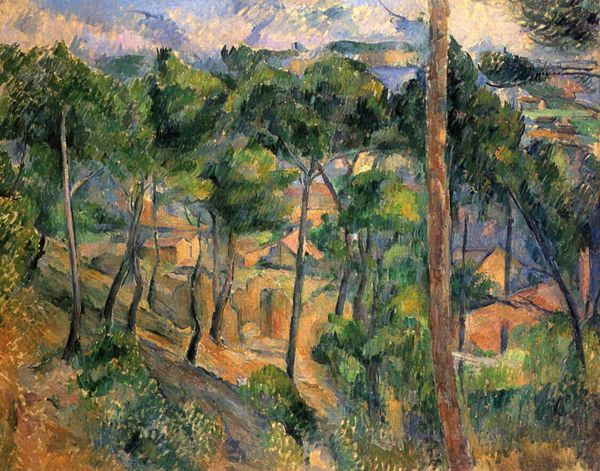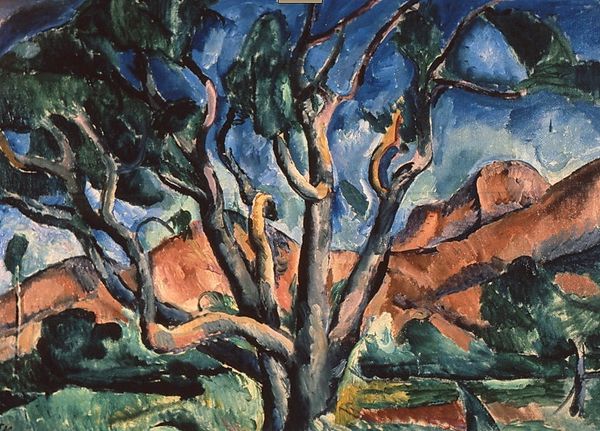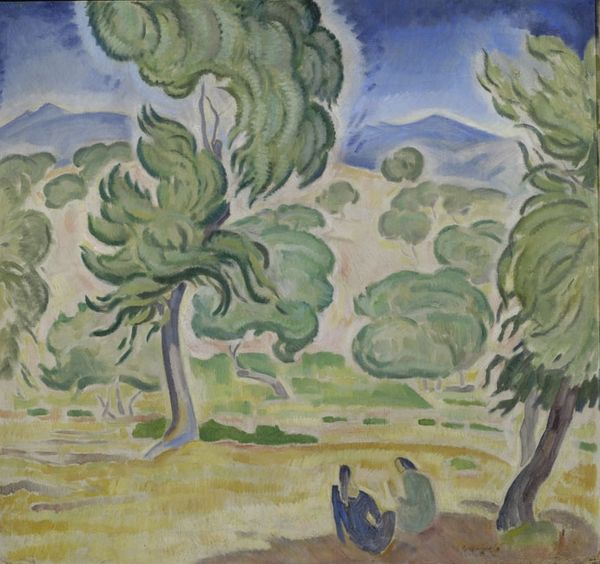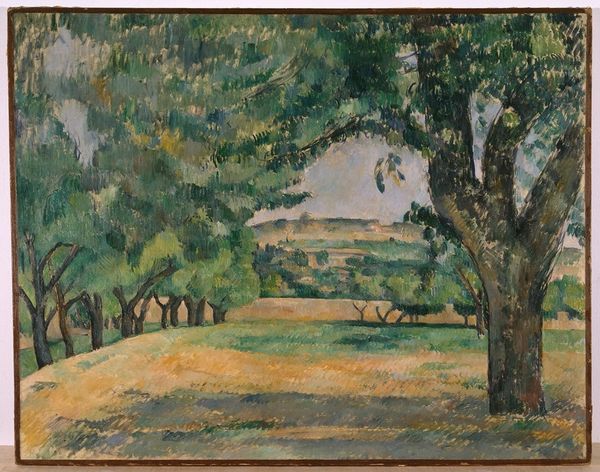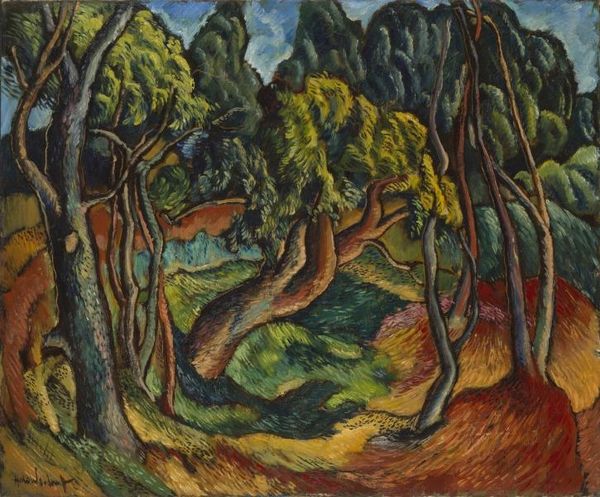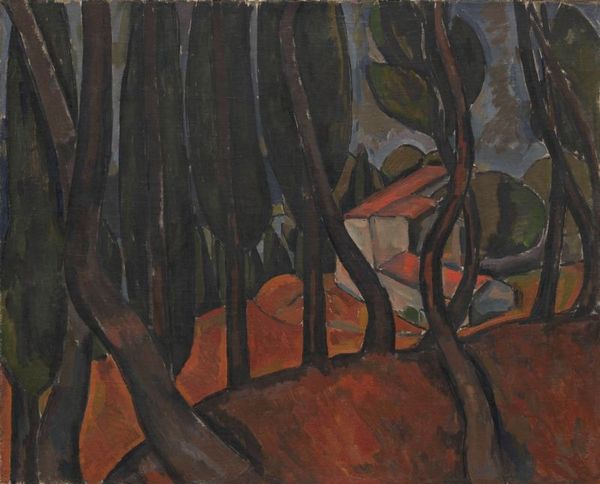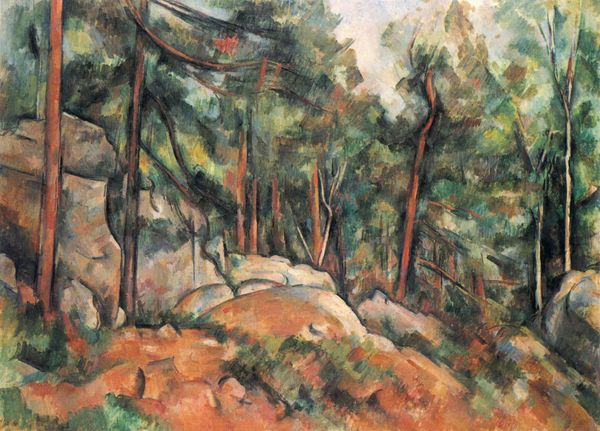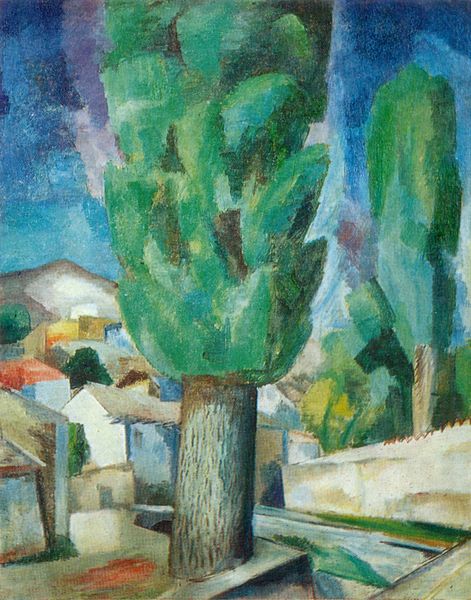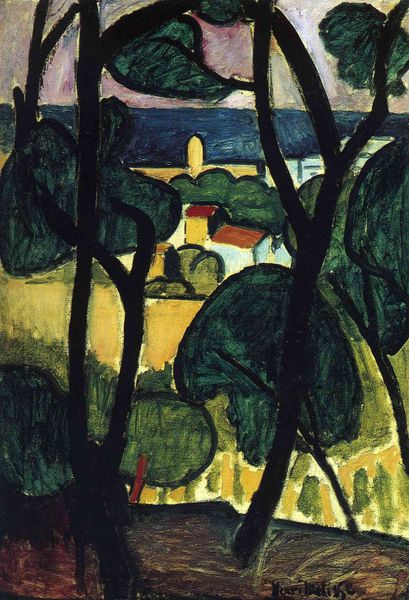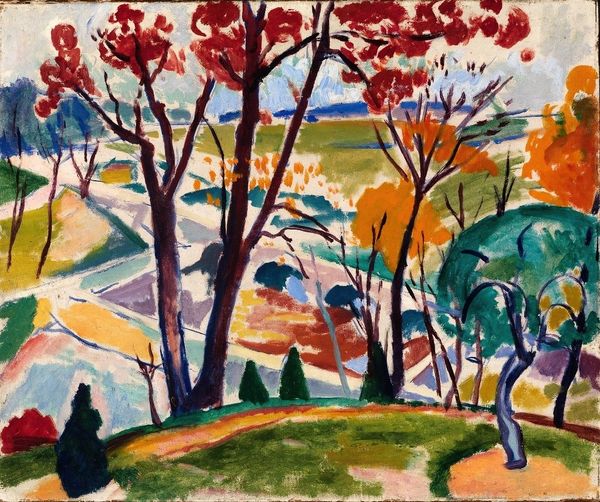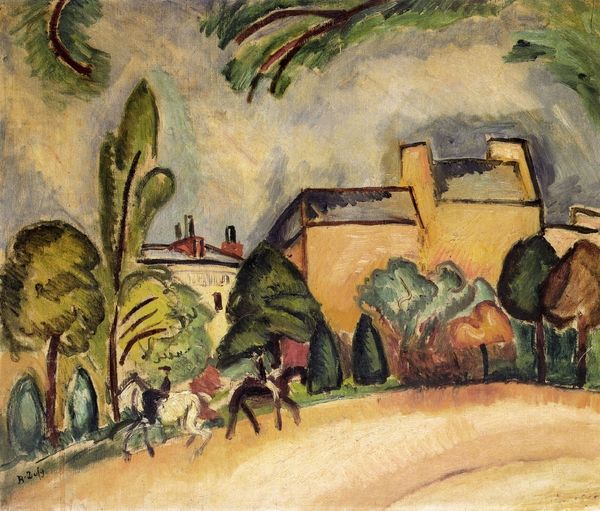
plein-air, oil-paint
#
tree
#
plein-air
#
oil-paint
#
landscape
#
german-expressionism
#
house
#
impressionist landscape
#
figuration
#
forest
#
expressionism
#
cityscape
#
expressionist
Dimensions: 70 x 86 cm
Copyright: Public domain US
Curator: Standing before us is Pyotr Konchalovsky's "Landscape," painted in 1912. It's a fascinating example of his exploration with oil paint. Editor: It's certainly striking. The colors—those vivid greens and earthy browns—evoke a sense of untamed, perhaps even romantic, naturalism, but something is unsettling me at the same time. Curator: Well, this particular period marks Konchalovsky's intense engagement with various avant-garde movements, notably influenced by both Cézanne and the German Expressionists. You can really observe it through the chosen palette and in the brushwork. There is something both idyllic and a bit raw about it. Editor: Yes, I can see that raw expression coming from the angular forms of the trees. It's like the painting is using the symbols of landscape – trees, a small structure possibly representing habitation – to portray something more volatile beneath the surface. It's hard to escape the tension between the beauty and looming anxiety that is felt while observing it. Curator: Absolutely. Expressionism at this time had definite socio-political weight, too. Many artists sought to represent an escape from societal conventions, perhaps looking back to the countryside as this kind of symbol for liberation. But such landscapes always remain cultural products. Konchalovsky, while drawing inspiration en plein air, clearly brings his own modern sensibility. Editor: Thinking about what landscape usually represents – tranquility, an ideal, escape to some Arcadia - yet these houses seem almost invaded by the forest, which holds all of these associations we were discussing a moment ago. The perspective is unusual as well, as if looking down upon the houses, dominating them or overshadowing their potential for growth, if you like. Curator: An interesting read. Indeed, viewing it through this perspective reveals those very real historical complexities reflected in what appears initially as just a "Landscape." Editor: Indeed. So much lies hidden just beneath the surface. Curator: Precisely. The interplay of cultural representation and personal emotion in works like this keep it speaking to us in new ways, over a century later.
Comments
No comments
Be the first to comment and join the conversation on the ultimate creative platform.
